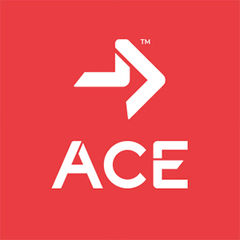Do you have a very active kid who is ready to join some recreational sports teams this year? The progression from afterschool activities to a more structured team practice and conditioning program is a big change for kids. There are more demands placed on them physically, mentally and emotionally, as activities get more competitive, challenging and consistent.
Certified fitness professionals must design fitness programs that create a positive experience for kids, generate effective outcomes and decrease risk of overuse injury or burnout.
The key training principles that every coach and trainer should include in their fitness program are progression, overload, regularity and specificity. The demands placed on the body must gradually and progressively increase over time to result in long-term fitness gains. Unless we continue to vary our mode of exercise or intensity and duration of training we will not get better or stronger. This training principle goes hand in hand with the overload principle, which states that, to get stronger, the body must exercise at a level that is greater than it is normally stressed. If we continue to train at the level the body is accustomed to or comfortable with, we will maintain that current state of strength without seeing bigger improvements in our abilities.
Understanding the overload principle allows us to create fitness programs that generate better results for our athletes and continues to challenge their maximal potential. The overload principle uses a variety of techniques to advance strength and training adaptations.
1. Changing the exercise type
2. Increasing the amount of weight lifted
3. Increasing the number of repetitions performed
4. Increasing the total training volume (repetitions and sets are increased)
5. Increasing the speed of movement
Here is an example of different overload training techniques to improve lower-body strength. This individual is currently comfortable using 90 pounds on a leg press for 10 reps x 3 sets.
1. Increase weight and decrease reps: Leg Press 100 lbs. for 8 reps. Perform 3 sets.
2. Increase reps and sets: Leg Press 90 lbs. for 15 reps. Perform 4 sets.
3. Add a variety of training techniques: Combine a superset of 10 squat jumps right after performing 10 reps of Leg Press. Perform 3 sets.
4. Increase the difficulty of the exercise: Advance from Leg Press to Single-leg Press to work on unilateral strength.
Here are a few examples of appropriate cardiovascular overload techniques for a young athlete to improve overall endurance. Let’s assume this young athlete can easily perform a 1-mile run in 9 minutes (4 laps around track).
You could overload his or her cardiovascular endurance in one of three ways:
1. Increase the length of distance training: Perform 5 laps around the track with no breaks.
2. Increase the speed of training: Perform 1 lap at sprint tempo with rest breaks in between laps (1 lap sprint in 2 minutes, rest for 2 minutes and repeat x 4).
3. Add variety in training techniques: Perform Rabbits (100-meter sprint, 100-meter jog, repeat for 4 laps) around the track instead of same-speed intervals. Progress this style of training by adding more laps or by increasing the distance of the sprint and decreasing the length of rest.
Remember that overload is only required once an exercise is mastered in terms of proper form and strength ability. Overload and strength training programs should always be individualized for each athlete.




 by
by 


